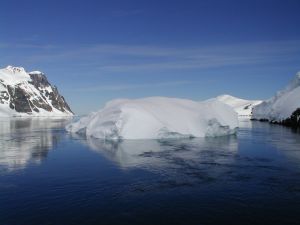Isotopic analyses provides climate scientists with some important data. Consider two examples:

Analysis of isotope ratios illustrates an important procedure in chemistry: the use of standards. When analyzing the 18O/16O ratio in water molecules in ice cores, climate scientists compare the ratio in the ice core to a reference ratio called the Vienna Standard Mean Ocean Water (VSMOW). VSMOW is a sample of water that has been synthetically purified and distilled to produce specific isotope ratios of hydrogen and oxygen. Despite its name, VSMOW is not seawater and contains no salt. This sample is used as an arbitrary standard; the isotope ratios of hydrogen and oxygen in other samples are compared to VSMOW. Isotope ratios of other elements are expressed relative to other standards. For instance, carbon isotope ratios are measured relative to Vienna Pee Dee Belemnite (VPDB) from a limestone formation in South Carolina.
The standards for isotope ratios are arbitrarily chosen as convenient reference points to express the isotopic composition of other samples. The isotope ratio of the standard is determined using mass spectrometry, so that the isotope ratios of other samples can be compared to the ratios found in the standard.
Why Should We Care?
Throughout chemistry standards are used to allow comparison of scientific data. Use of the VSMOW standard allows climate scientists to obtain proxy temperature measurements by calculating the ∂18O value of oxygen atoms found in water molecules in ice cores.
Also, the VPDB standard is used to express the isotope ratios that indicate the source of atmospheric carbon. By expressing carbon isotope ratios relative to VPDB, chemists can easily determine if 13C/12C ratios are higher or lower than the ratios found in other samples.
Question For Thought
Can you think of an example of a standard used in chemistry other than the isotope ratio standards VSMOW or VPDB?